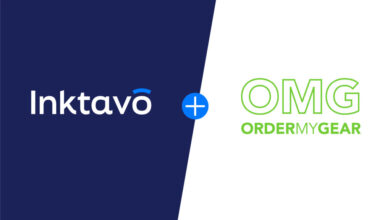Glitter is the most popular transfer for use with sublimation. The glitter powder used to make these materials is polyester, which allows it to be sublimated as long as it is a light-colored glitter. This allows for custom colors and patterns. What’s more, many of the glitter heat transfer lines currently available can also be used as appliqué material for embroidery, just stitch over the glitter and tear the excess away when you’re done. By sublimating on the glitter before stitching, the issues with registration posed by heat transfers can be alleviated. Just sublimate the glitter on a sheet of Teflon, allow the adhesive to solidify by waiting for a couple of hours, then line up your stitch with your design on your garment and embroider. After you peel away the excess glitter, make sure to heat press the design to seal the glitter.
While it is the most popular, glitter isn’t the only heat transfer vinyl material available for use with sublimation. Many metallic films and foils are coated with polyester, making them compatible with sublimation. Unfortunately, coating these films makes them stiffer, resulting in a heavier hand on the garment, but if you incorporate space in your designs, much of that can be eliminated.
—Specialty Materials



